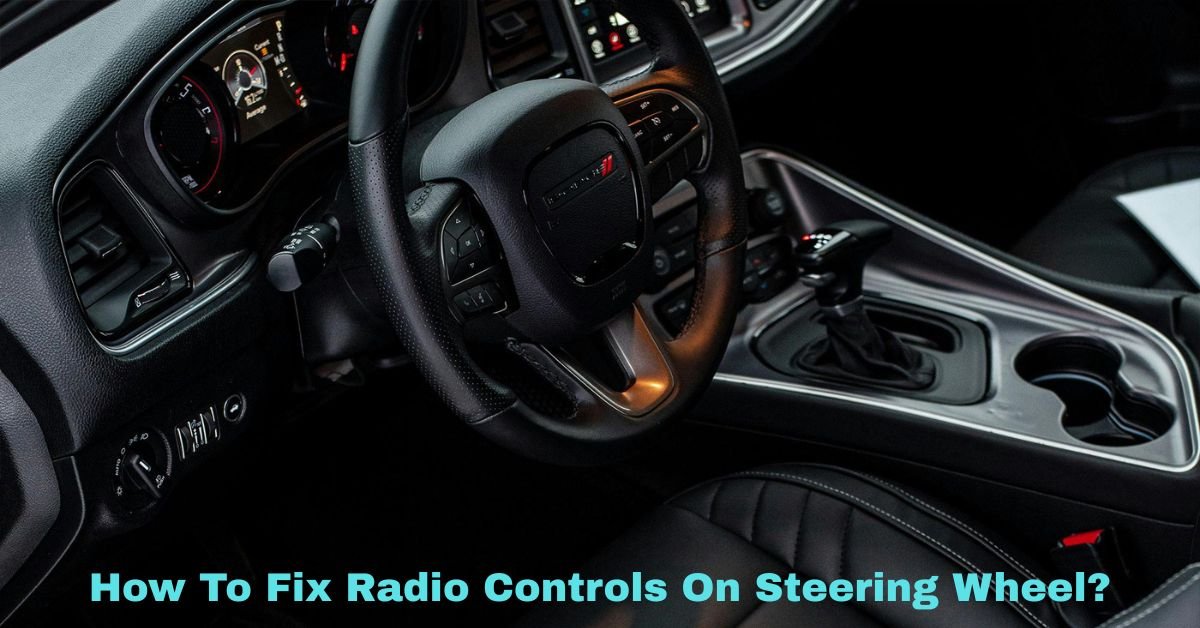Steering wheel radio controls are a convenience we often take for granted—until they stop working. Whether you’re skipping tracks on your favorite playlist or adjusting the volume without taking your hands off the wheel, these buttons help make driving safer and more enjoyable. When they fail, though, it’s not just an inconvenience—it could be a sign of a deeper electrical or mechanical issue.
Fortunately, with a little patience and some basic tools, you can often diagnose and even fix the problem yourself. In this blog post, we’ll walk you through the common causes of steering wheel radio control failures and how to go about fixing them.
How to Fix Radio Controls on Your Steering Wheel
Common Causes of Malfunctioning Steering Wheel Radio Controls
It’s useful to know what might be causing the issue before beginning the fix. Here are the most common culprits:
- Worn Clock spring (Spiral Cable):
This is the most common cause of unresponsive steering wheel controls. The clock spring is a coiled wire assembly that allows the steering wheel to turn while maintaining the electrical connection between the steering wheel and the vehicle’s systems. Over time, the wires inside can wear out or break. - Blown Fuse:
Like many electronic components in your car, the steering wheel controls are protected by fuses. A blown fuse could cut power to the buttons. - Dirty or Faulty Buttons:
Dust, spills, or simple wear and tear can cause the buttons to stick or stop functioning. - Software Glitch or Integration Issue:
If you’ve recently replaced your stereo or updated your vehicle’s software, the steering wheel controls may need to be reprogrammed or re-synced. - Loose or Damaged Wiring Harness:
The connection between the steering wheel and your stereo system could be loose or damaged, especially if you’ve had work done on your dashboard recently.
Step-by-Step: How to Diagnose and Fix the Issue
1. Check the Fuses
Start with the easiest fix. Look in your vehicle’s owner manual to locate the fuse box and identify the specific fuse responsible for the radio and steering wheel controls. Examine the fuse for indications of damage after pulling it. Replace it with one of the same amperage if it has blown.
Must Read: Why Does My Steering Wheel Shake At 60 MPH?

2. Test the Buttons
Press each button on the steering wheel and see if any of them respond. If only some buttons work, the issue could be dirty or corroded contacts. In that case, you’ll need to remove the airbag (carefully!) and clean the contacts behind the buttons using electronic contact cleaner.
Important: To prevent unintentional deployment, disconnect your car’s battery and wait at least ten minutes before working close to the airbag.
3. Inspect the Clock spring
This step is a bit more complex and requires removing the steering wheel. Once removed, you can access the clock spring assembly. If you notice frayed or broken wires inside, the clock spring needs to be replaced. You can purchase a new one online or from an auto parts store, but be sure to get the correct model for your vehicle.
4. Check for Compatibility Issues
If your steering wheel controls stopped working after installing an aftermarket stereo, the issue might be compatibility. Some aftermarket head units require a special adapter (often called a steering wheel control interface) to work with factory buttons. Check the stereo’s manual and make sure the adapter is properly installed and programmed.
5. Consult Your Vehicle’s Diagnostic System
Some vehicles allow you to run diagnostics through the onboard computer. A scan tool or OBD-II reader can help you identify faults in the electrical system that might be affecting the steering wheel controls.
When to Seek Professional Help
If you’re not comfortable removing the airbag or dismantling your steering wheel, it’s perfectly okay to leave the job to a professional mechanic. Additionally, if you’ve followed all the above steps and the controls still don’t work, the problem could be buried deeper in your vehicle’s wiring or control modules.
Final Thoughts
Steering wheel radio controls are a small but significant part of modern vehicle design. Fixing them can range from a simple fuse replacement to a full clock spring swap, but with the right tools and careful steps, many drivers can handle the task themselves.
If you’re a DIY enthusiast or just trying to save on repair costs, understanding how to diagnose and fix these controls can save you time and money. Just remember: safety first—always disconnect the battery and take care when working near airbags.
